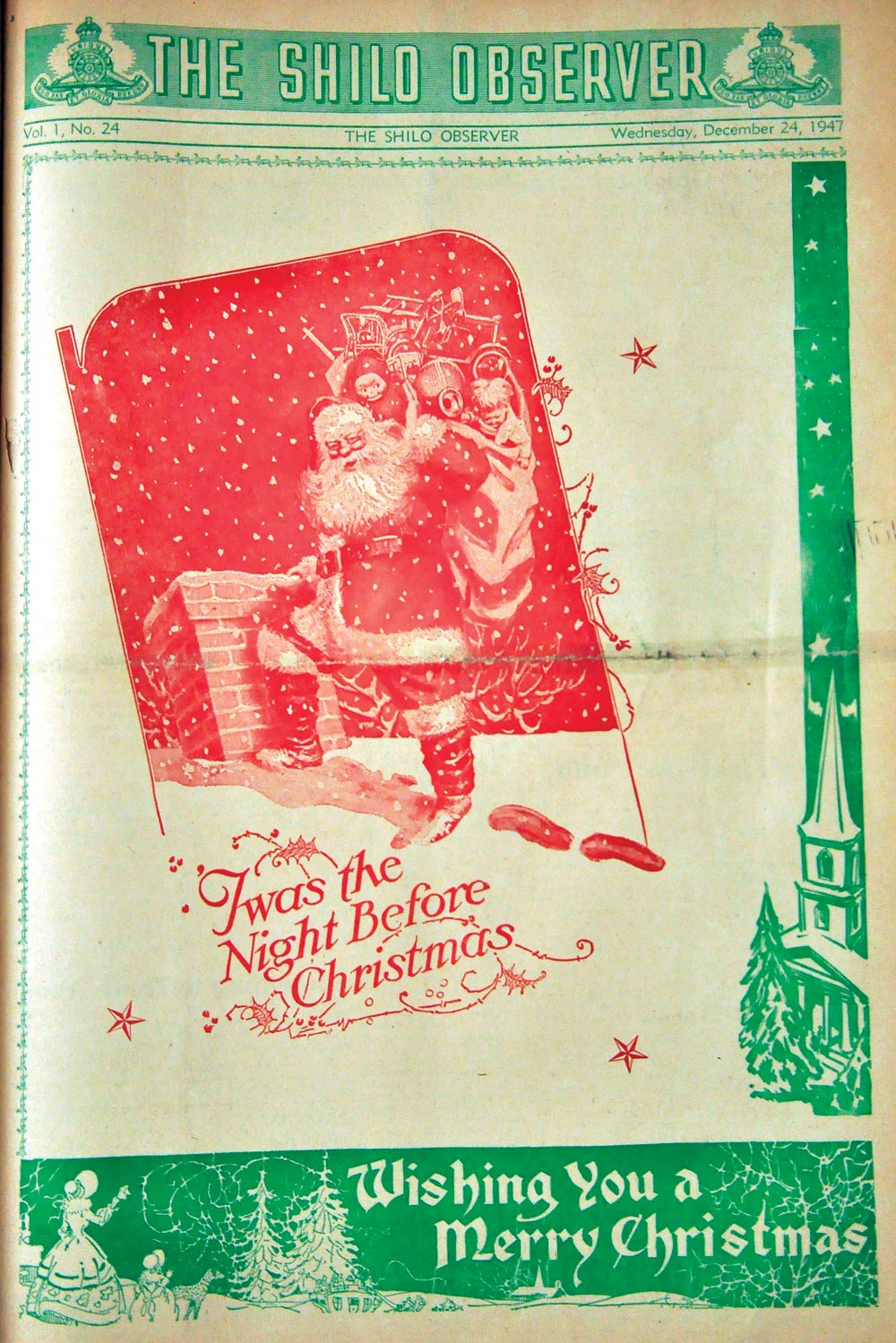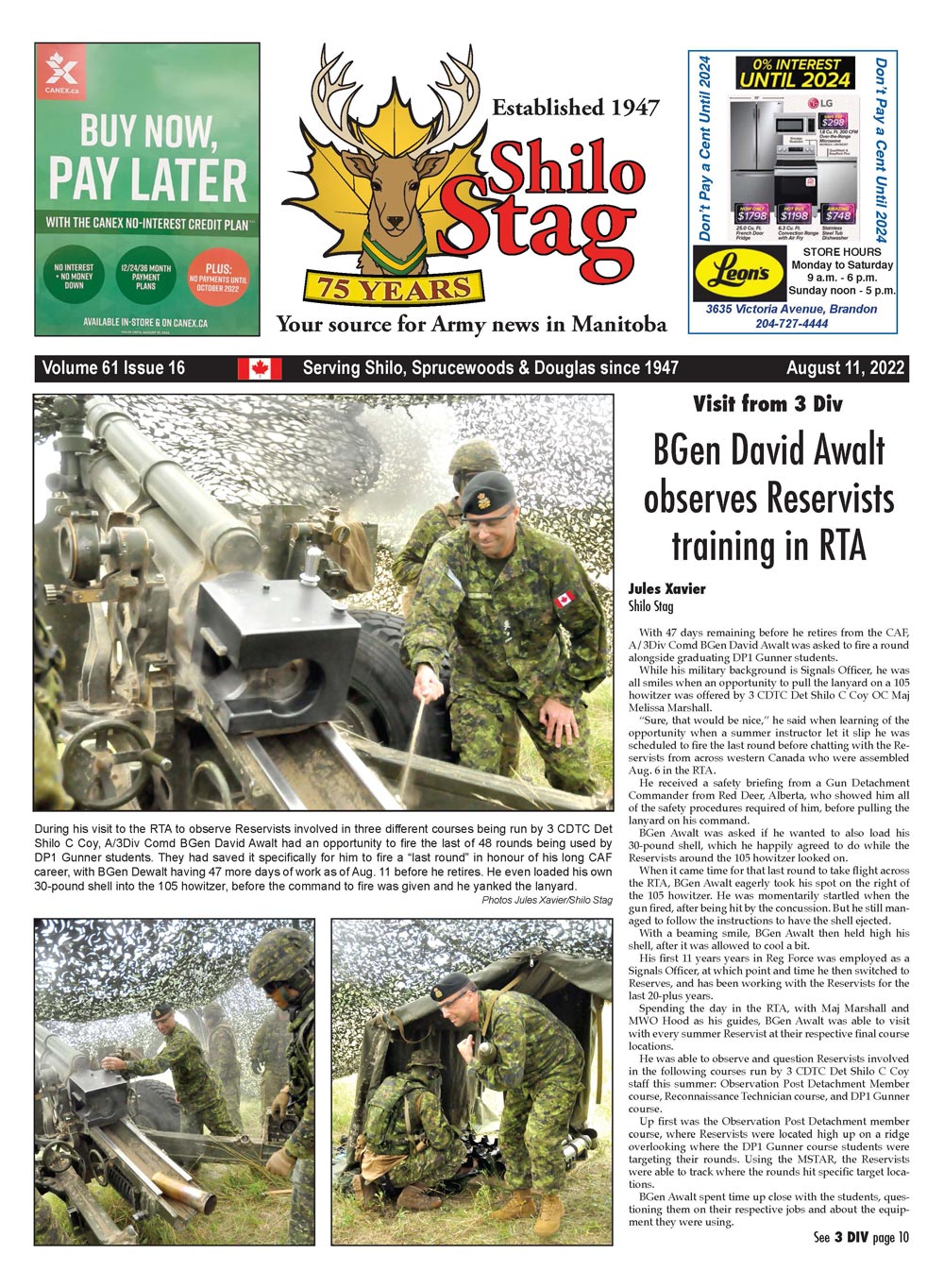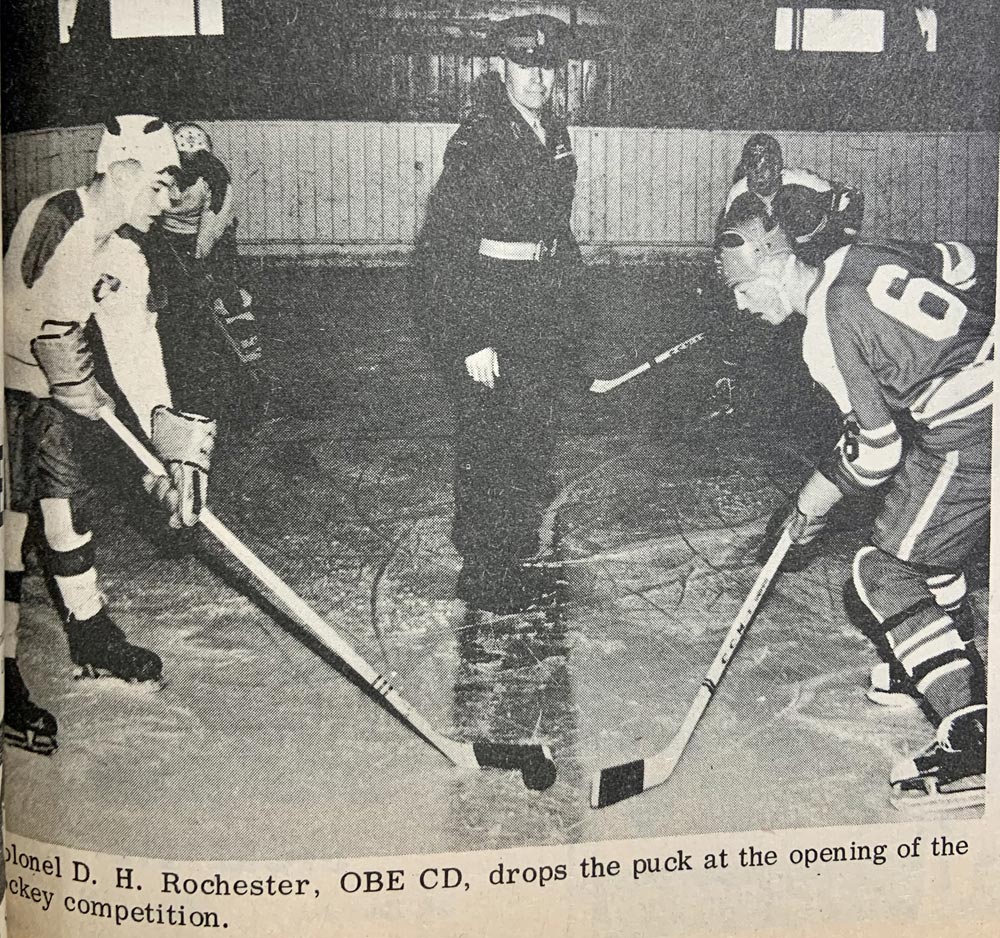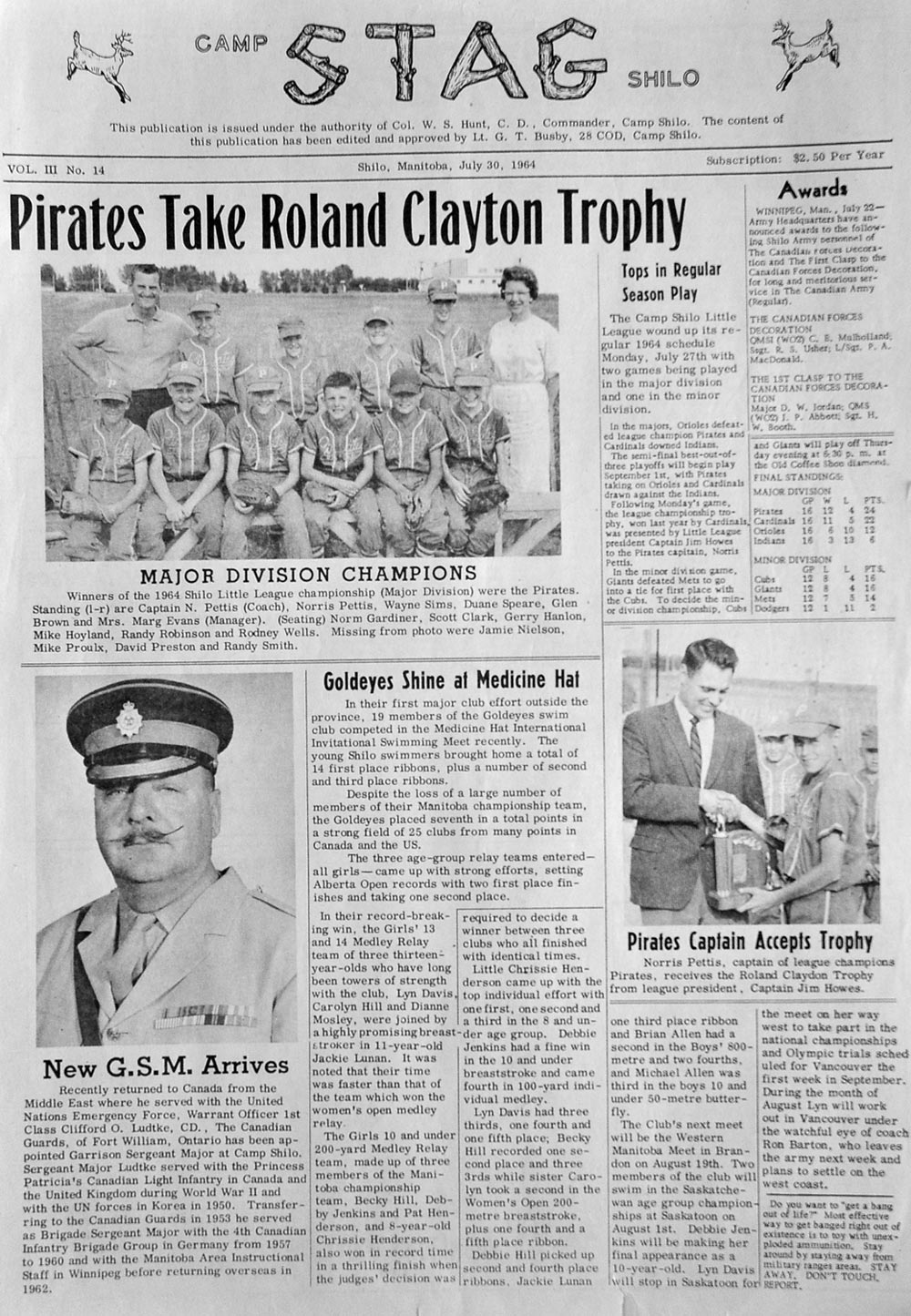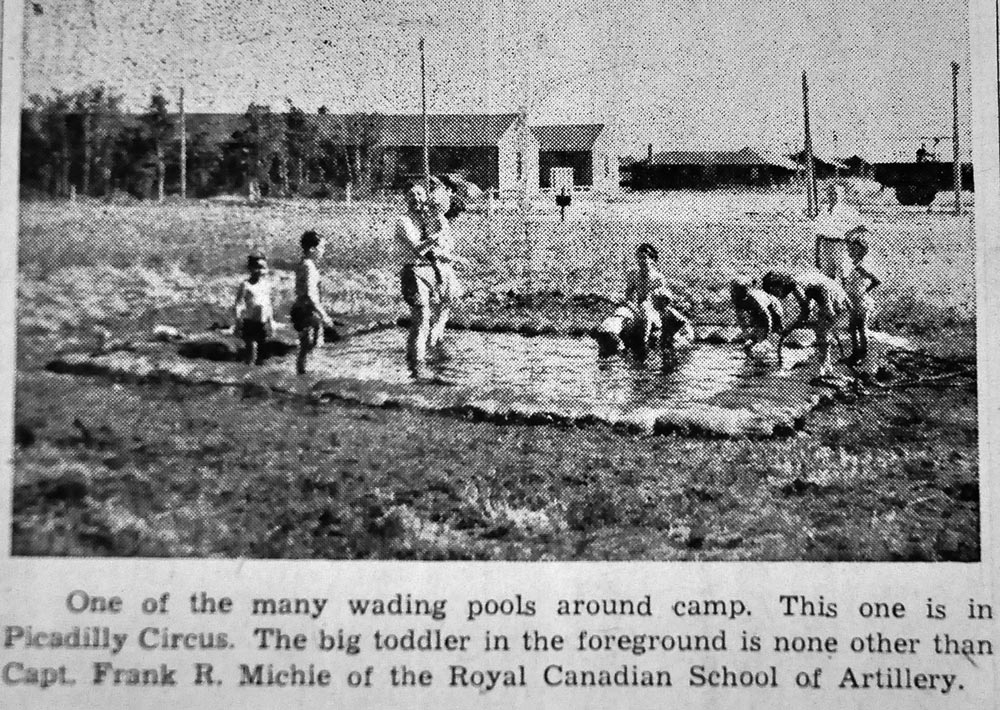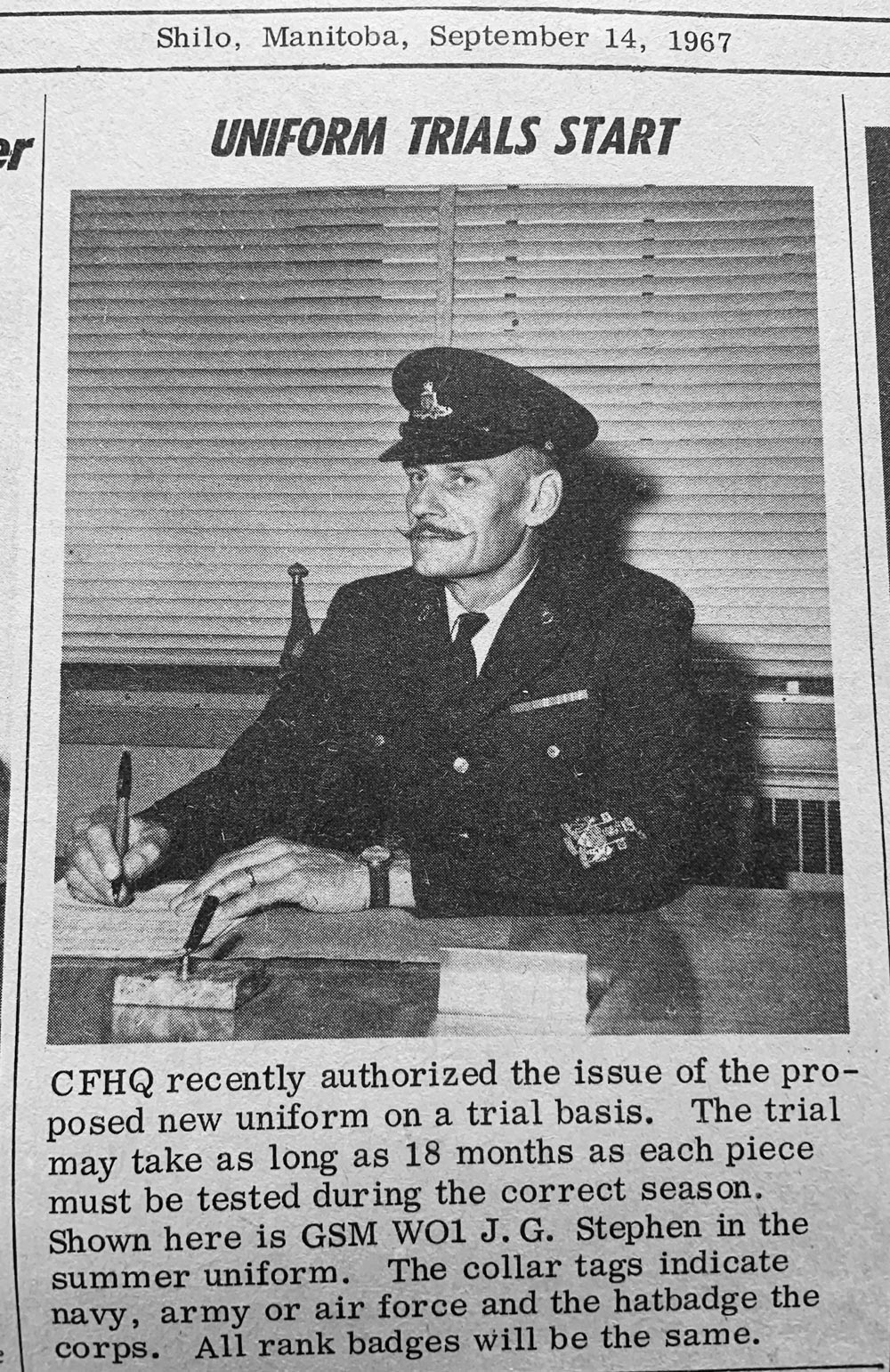
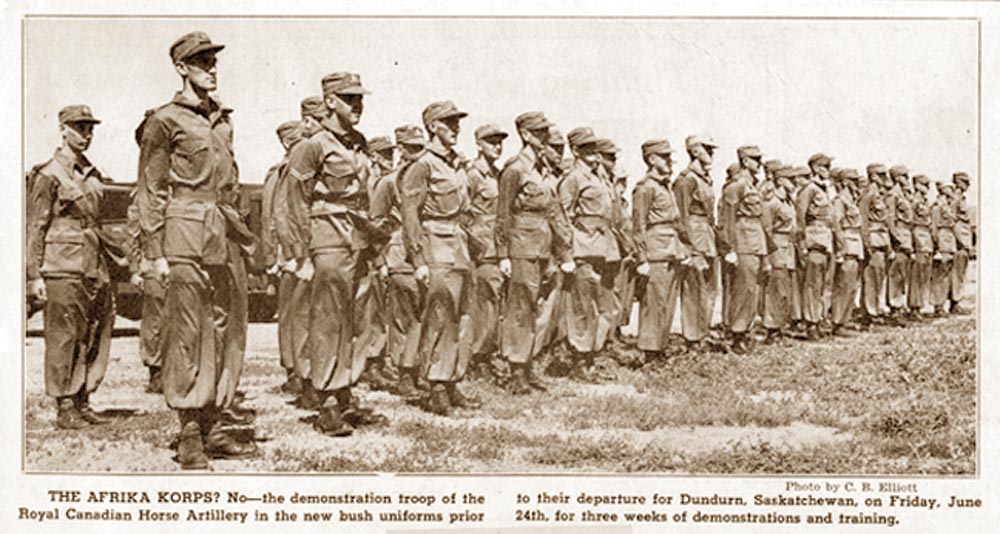
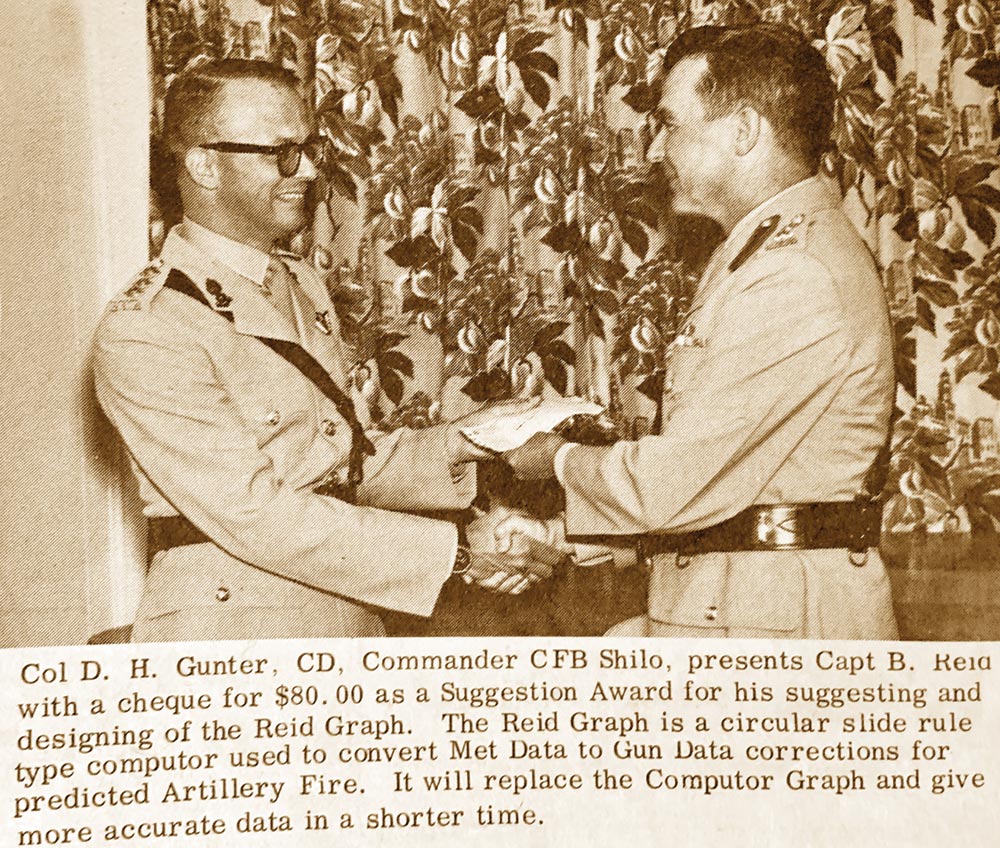
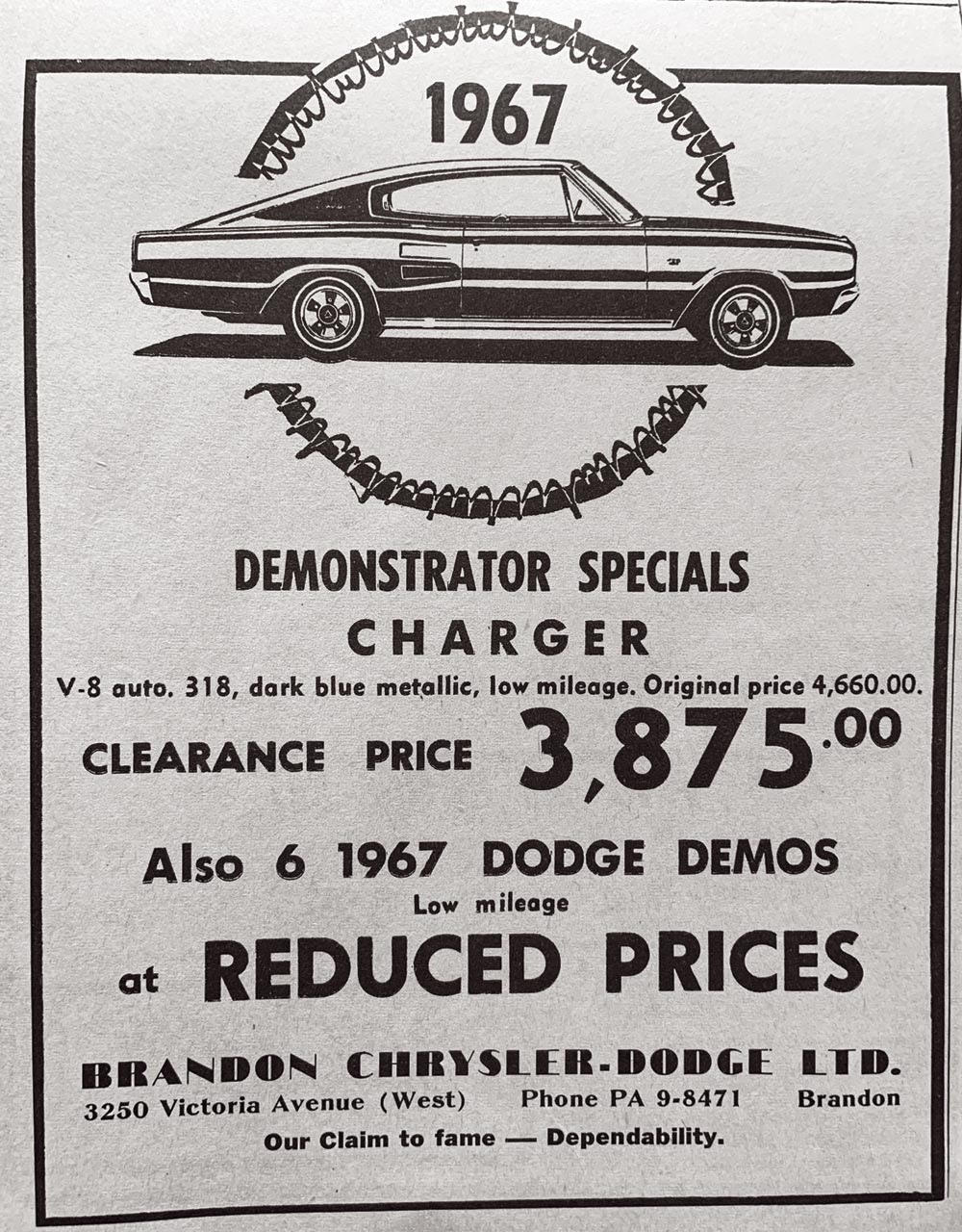

Jules Xavier
Shilo Stag
The birth of what would later be renamed the Shilo Stag can trace its start as Camp Shilo was evolving itself in the late 1940s.
The Shilo Observer made its debut on this prairie Army Base on July 18, 1947. The Friday newspaper at the time was printed in Brandon at Monarch Press.
The first editor was Lt RJ Hauser, with BSM (WOII) AE Carey handling assistant editor duties. Lt J Ferry handled sports coverage on a Base where PMQs were just starting to be built, with ground-breaking on basements and roads. There was no arena, nor a sports facility like the GSH for another few years.
This editor has spent some time sifting through the yellowing pages of The Shilo Observer which are now part of the RCA Museum collection — that venue received two bound copies covering 1947 and 1948 from the DND Library in Ottawa.
The early eight-page newspapers featured stories on reserve training on the Base. Like in recent years, soldiers were even tasked out to help with flooding problems in Manitoba back in 1947.
A story in an early edition saw Camp Shilo deploying men to fill sand bags near St. Paul in order to protect farmland from a river overflowing its banks.
Closer to home, on a hot summer afternoon early PMQ residents found a way to escape the heat. They put a tarp down, and around it placed sand bags. This was subsequently filled with water, and you had a pool to splash in.
Photographs from a 1940s era film camera with black and white Kodak film was used to take photos. Typewriters were used to bang out stories, which a typesetter would then transcribe so printers would have linotype to use in the layout process. BSM AE Carey and Ed Gurnick were the first photographers.
While the front page photos were grainy and postage-stamp sized, one of the first images to grace the cover was of artillery soldiers training out in the RTA. Words more than photos made up much of the eight pages, with some line drawing advertising provided.
Early advertisers, with full pages, were Eaton’s and Hudson’s Bay Company. Plus Doig’s and Knowlton’s Boot Shop, where you could purchase children’s Oxfords for $2.15. No PST or GST then.
One of the first front page stories revolved around the expansion of the existing nine-hole golf course on the Base.
There was also an international affairs page, plus a women’s page, which might feature a piece on a recipe for bread pudding, or fashion tips from the 1940s.
During that era, women wore fur, and the advertising for muskrat coats and other furs regularly appeared on the Observer’s pages. The Wheat City Tannery on 10th Street advertised to readers to even invest in furs.
Using five columns on each page, the classifieds offered a great deal for word advertising — 1.5 cents per word. Today, the Stag charges $10 for the first 20 words, and a dime for each additional word.
Besides a feature on a Hong Kong soldier sharing his diary excerpts from his time as POW, the newspaper offered a “new arrivals” article which shared information on who was posted to Camp Shilo, where they would be working, and where they came from.
Did you know Camp Shilo offered polo? In the late 1940s, the Base had a polo team besides offering baseball/fastball — slo-pitch was not invented yet as an alternative to batting a baseball on a diamond — with the teams playing communities in the hinterland.
So, trips to Wawanesa and Carberry were regular occurrences, with hard-fought games between the soldiers and their civilian counterparts.
When the Sept. 19 edition was published in 1947, there was a new editorial team on board featuring Lt JE de Hart as editor, Lt DE Gayton as radio editor and sports coverage being looked after by Sgt ET Peterson and Bdr RD Gray.
While the early editions of the newspaper were free on the Base, by the time the Feb. 27, 1947 edition came off the presses in Brandon, there would now be charges.
The front page was full of stories, often with one main photograph. A hard news item on the front of a Sept. 5, 1947 edition had the headline ‘RSM Seed’s car in accident.’ The story goes that RSM Seed, while out driving Saturday afternoon, had a “rather unfortunate” accident near Douglas, when a “60 cwt” drove into the back of his new ’47 Dodge Sedan.
Writers then were not afraid to editorialize in their copy, pointing out “it is indeed a pity that such a nice new automobile should receive scars so soon in its history” versus letting readers know if Mounties had laid charges in the motor vehicle accident.
In the fall of 1947, sewer diggers arrived at Camp Shilo to commence work on the site of the Permanent Married Quarters (PMQ), while a cricket match was moved from Wednesday to Saturday. Yes, besides polo, cricket was played on this Base.
When the Nov. 7, 1947 edition came off the presses, it featured a newer artsy banner, while Mrs K Weir was named women’s editor, and CB Elliott was taking the majority of the photographs appearing on the pages. Sgt RJ Chowcross was named assistant editor.
During the next 12 months, your CCNA award-winning Shilo Stag will continue to peruse back issues of the Observer, plus find interesting stories/photographs from the following decades where the Observer transitioned to the Stag leading up to today’s edition you are enjoying while sipping on a morning coffee at Cursed Coffee Co. or digesting your Pizza Pizza lunch at Garrison Grill.
Our newspaper history during the past 75 years has been interesting, as soldiers here trained for the Second World War, Korean War and later the Afghanistan War, where 20 lives from this Base were lost during the fighting. Camp Shilo was born when artillery training switched from nearby Camp Hughes after it was closed in the 1920s.
The award-winning Base newspaper, your source for Army news in Manitoba, continues to cover the military community with changing technologies now bringing you community news coverage online with the introduction of a website built by Leech Group in Brandon — www.shilostag.ca
The final newspaper to come off the presses in Killarney for distribution Aug. 11 was the 16th edition of 2022.
The Stag garnered three CCNA awards for coverage in 2020 and 2021 after the national journalism competition was postponed during those years due to the COVID-19 pandemic. Editor Jules Xavier’s writing and photography garnered a first-place and second-place in history feature reporting, while a photo essay earned a third-place from CCNA judges from across Canada.
